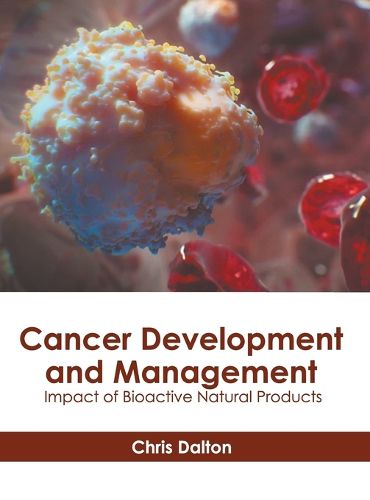Readings Newsletter
Become a Readings Member to make your shopping experience even easier.
Sign in or sign up for free!
You’re not far away from qualifying for FREE standard shipping within Australia
You’ve qualified for FREE standard shipping within Australia
The cart is loading…






Bioactive compounds are secondary metabolites that provide nutritional benefit as well as have therapeutic potential. They can be found in many foods including vegetables, whole grains, fruits and a variety of plants. Bioactive compounds are typically made up of amino acid residues and can have a variety of physical effects including antithrombotic, antioxidant and antihypertensive activities. They vary widely in terms of structures and functions, and could be used as chemopreventive and chemotherapeutic agents in cancer treatment. Various types of bioactive compounds include polyphenolic compounds, carotenoids, sulfur-containing compounds and terpenoids. Additionally, many pathways have been shown to mediate the influence of bioactive compounds on cancer and achieving positive outcomes in the cancer patients, through endoplasmic reticulum stress, regulation of oxidative stress and epigenetic changes. This book provides significant information to help develop a good understanding of cancer management using bioactive natural products. A number of latest researches have been included to keep the readers up-to-date.
$9.00 standard shipping within Australia
FREE standard shipping within Australia for orders over $100.00
Express & International shipping calculated at checkout
Stock availability can be subject to change without notice. We recommend calling the shop or contacting our online team to check availability of low stock items. Please see our Shopping Online page for more details.
Bioactive compounds are secondary metabolites that provide nutritional benefit as well as have therapeutic potential. They can be found in many foods including vegetables, whole grains, fruits and a variety of plants. Bioactive compounds are typically made up of amino acid residues and can have a variety of physical effects including antithrombotic, antioxidant and antihypertensive activities. They vary widely in terms of structures and functions, and could be used as chemopreventive and chemotherapeutic agents in cancer treatment. Various types of bioactive compounds include polyphenolic compounds, carotenoids, sulfur-containing compounds and terpenoids. Additionally, many pathways have been shown to mediate the influence of bioactive compounds on cancer and achieving positive outcomes in the cancer patients, through endoplasmic reticulum stress, regulation of oxidative stress and epigenetic changes. This book provides significant information to help develop a good understanding of cancer management using bioactive natural products. A number of latest researches have been included to keep the readers up-to-date.